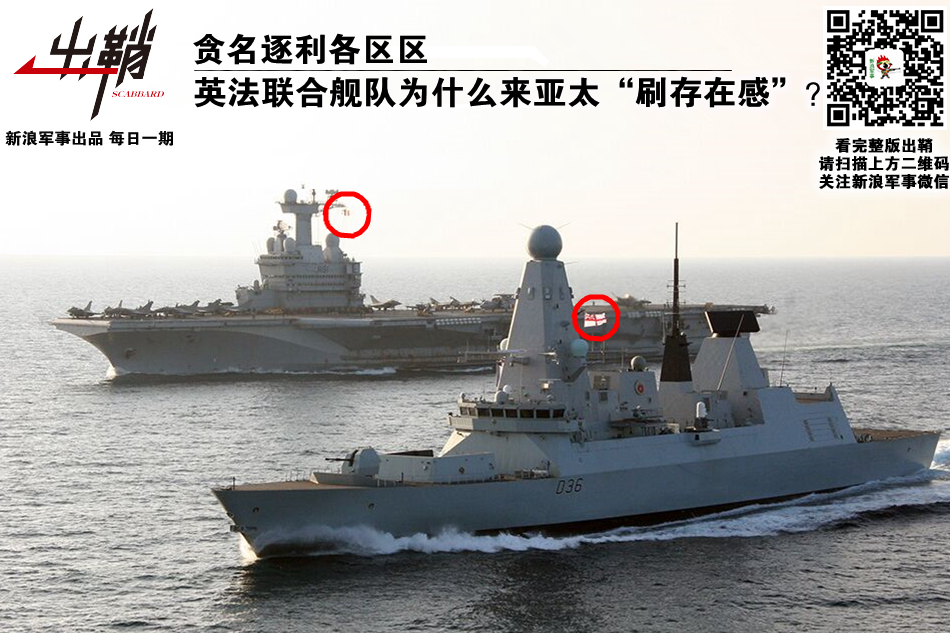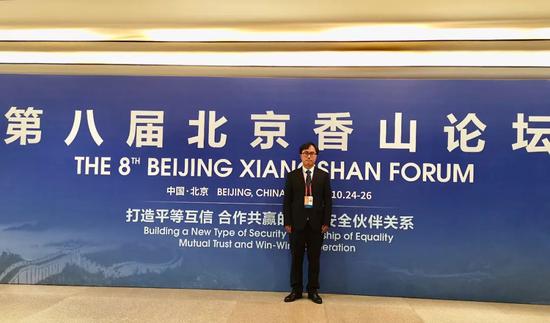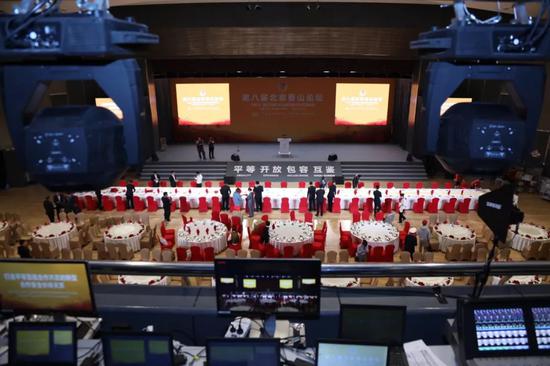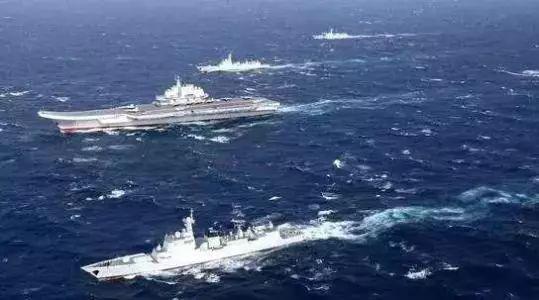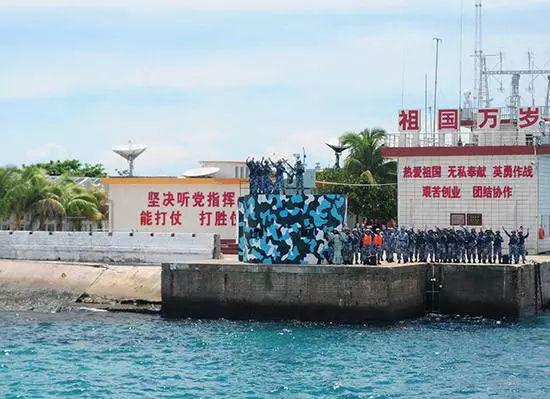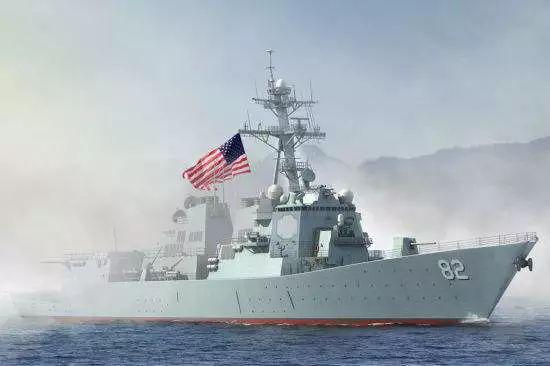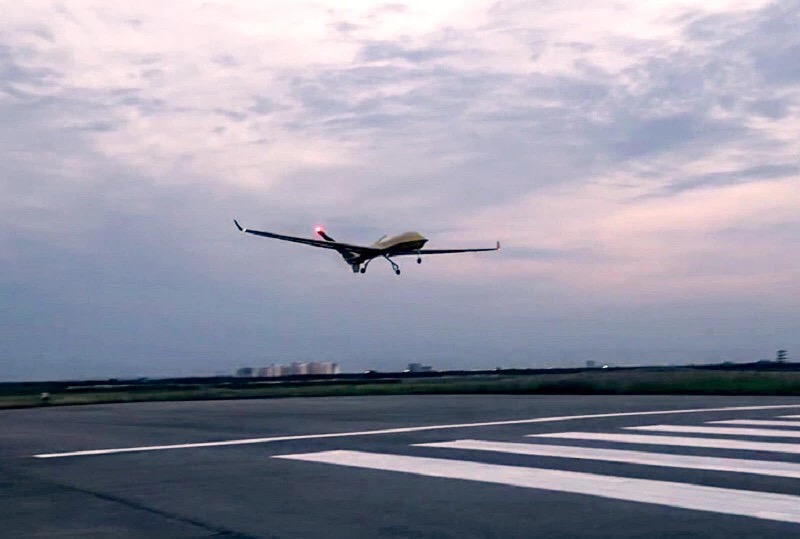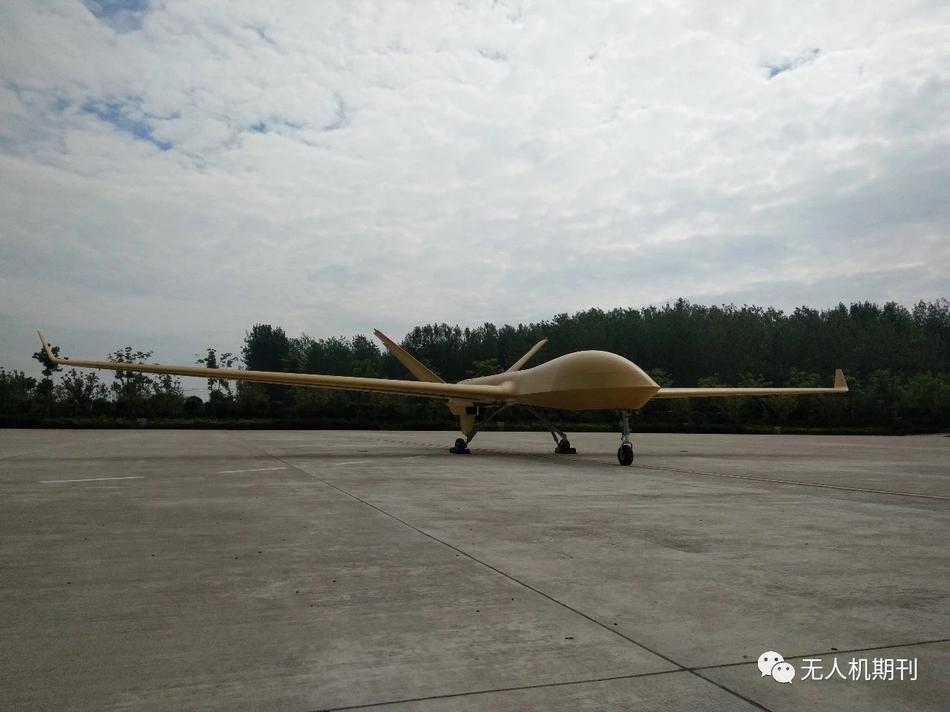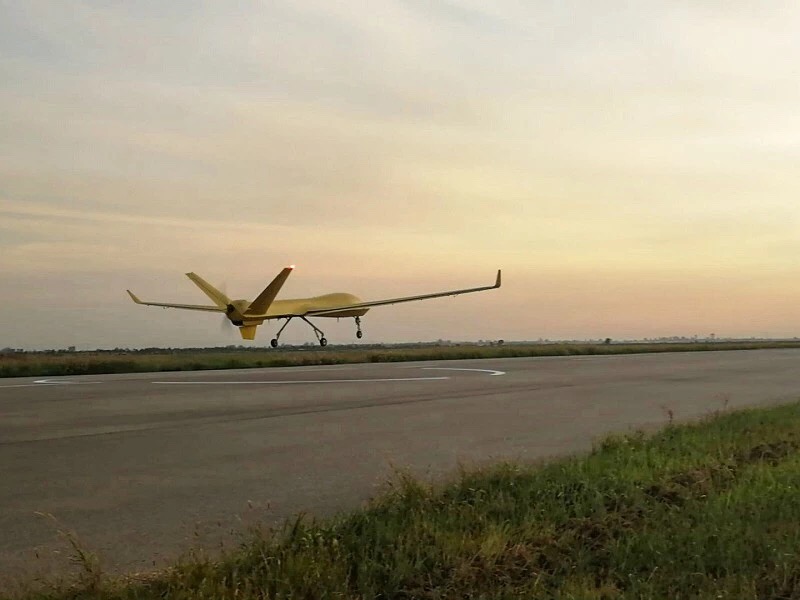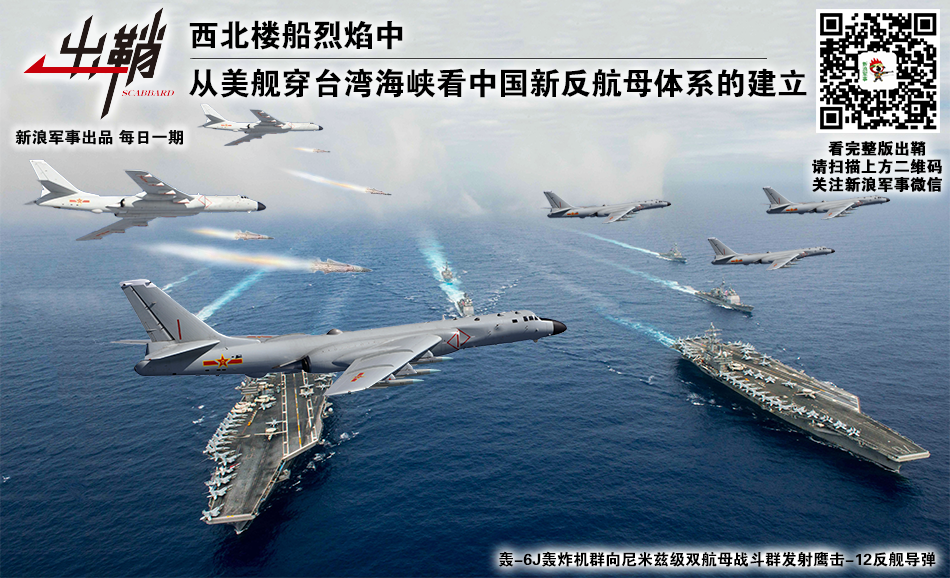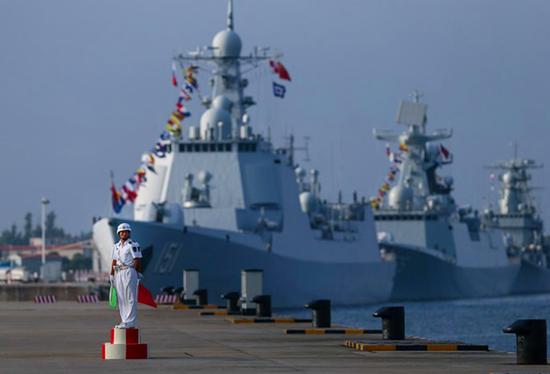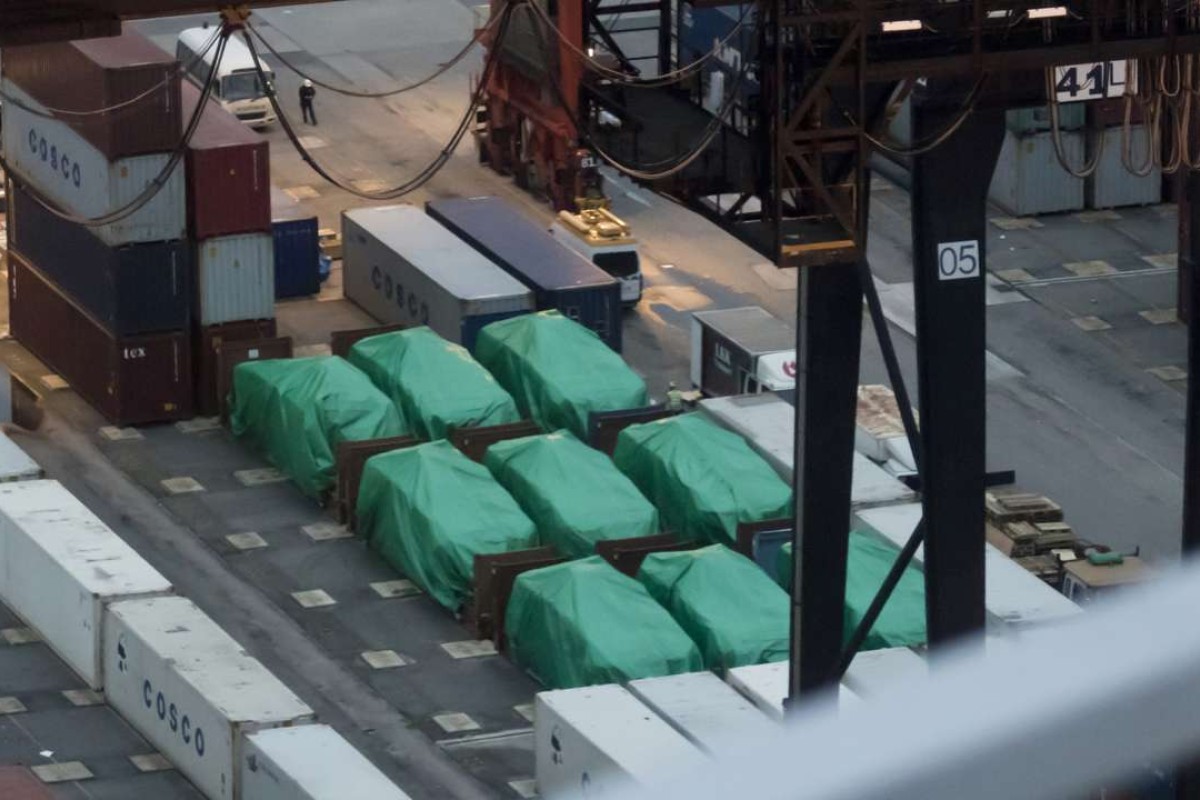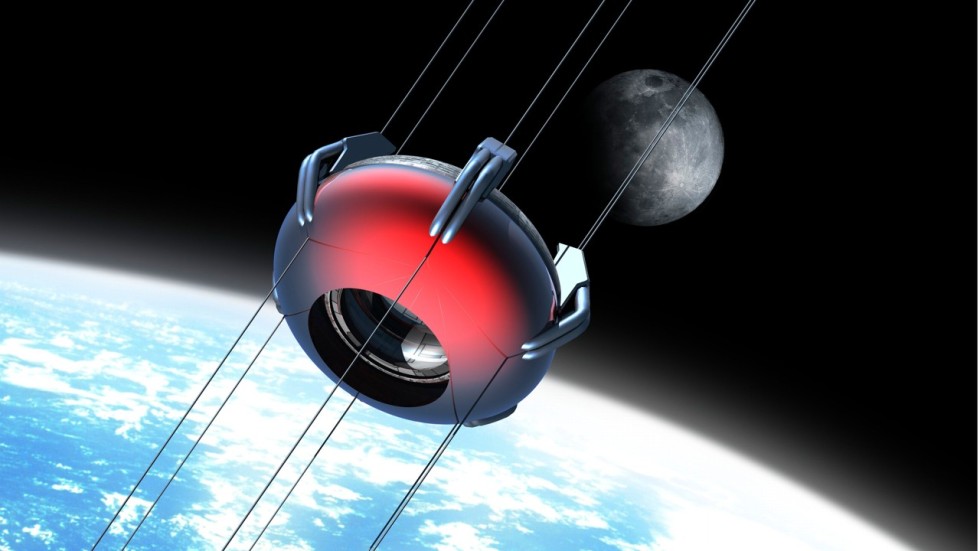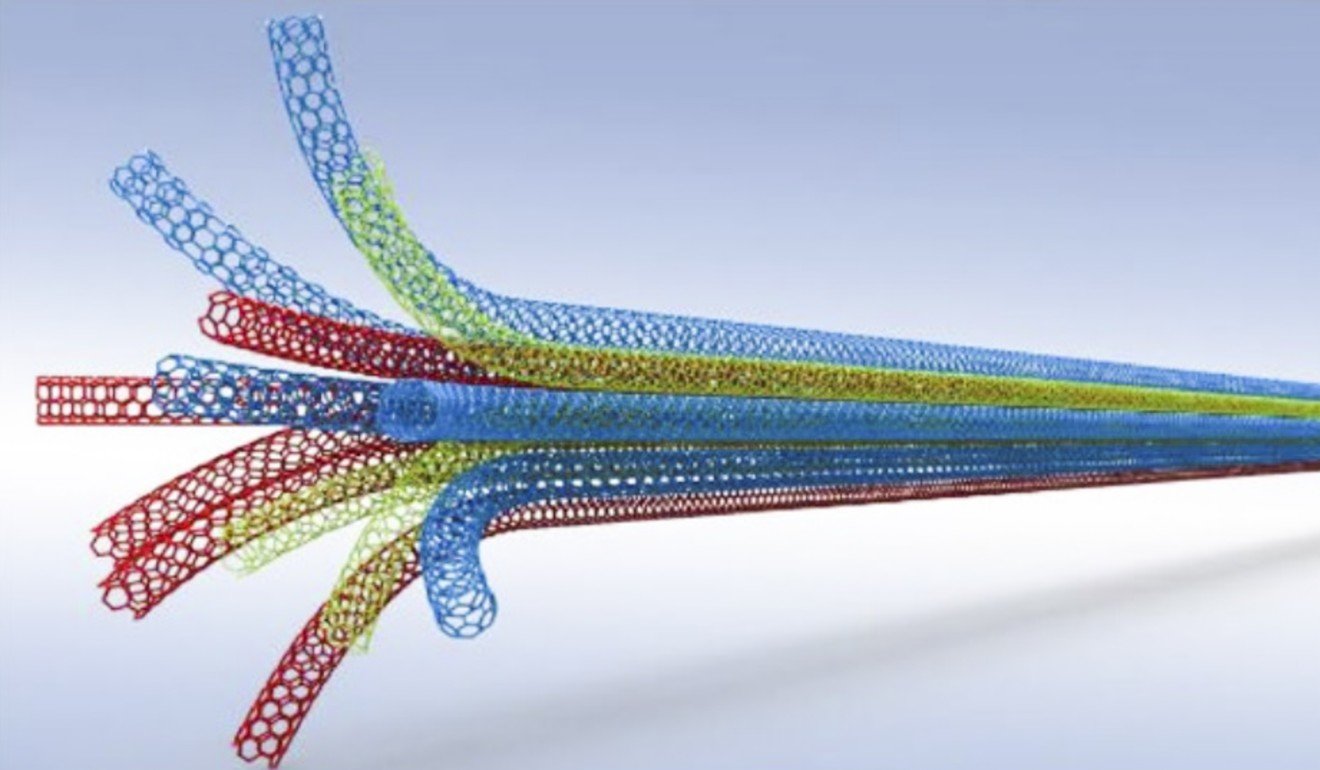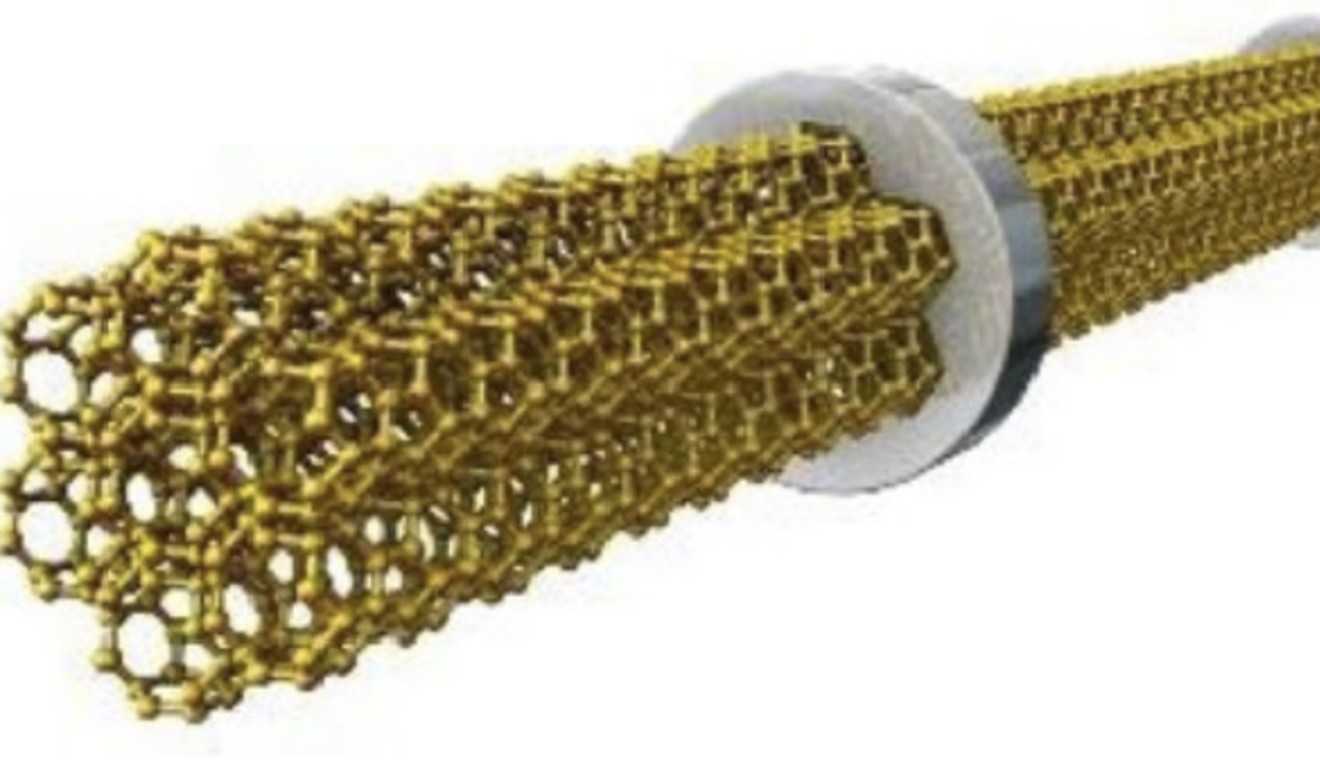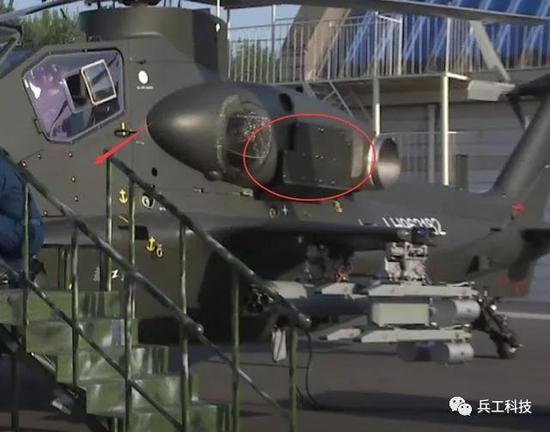Today by counting destroyers and frigates the PLA is 10% stronger than US Navy already. And within a matter of short time PLA aircraft carriers and submarines will exceed US Navy strength numbers and performance as well as technological level. The gap is tearing up fast and ferociously, no way Chow Ang Moh could catch up, and will be further and further behind.
https://mil.news.sina.com.cn/china/2018-10-27/doc-ifxeuwws8563813.shtml
英国将再派舰赴南海 被嘲笑:英海军不及中国一个舰队
英国将再派舰赴南海 被嘲笑:英海军不及中国一个舰队
914
贪名逐利各区区:英法联合舰队为何来亚太刷存在感?1/25
查看原图图集模式
今年6月5日,国内媒体引述香港《南华早报》报道称,法国国防部长帕利3日在新加坡举行的香格里拉对话会上表示,法国和英国军舰本周将在中国南海联合执行“自由航行行动”。英国《每日电讯报》也引述英国国防大臣威廉姆森的表态称,英国将向中国南海派出3艘军舰,宣示力挺所谓的“航行自由”。英法如此一唱一和不禁让人想起历史上的英法联军。英法为何要再次组队闯南海,中国又如何应对?本期出鞘带您关注英法联军闯中国南海。(查看完整内容搜索微信公众号:sinamilnews)

























原标题:[解局]北京香山论坛上的一场隐形交锋
来源:侠客岛
10月25-26日,第八届北京香山论坛举行。
作为国内最重要的军事和防务论坛之一,可看的点自然很多。比如,论坛首次被冠以“北京”两字,有67个国家和7个国际组织的官方代表参加,是历届规格最高;再比如,朝鲜人民武力省副相金亨龙参会并发表了近两千字的演讲,受到了媒体广泛的关注;塞尔维亚防长怒斥西方国家,“
那些导致了‘阿拉伯之春’的国家自己没有接受难民,却要求我们接受难民,这是不公平的”,同样引得一片叫好声。
不过,虽然本次香山论坛的气氛总体比较友好,但或明或暗,南海问题依然是一个焦点。特别是一些外方代表公开或私下认为,南海局势的紧张是因为中国岛礁建设和军事部署造成的。
对此,在前天论坛正式开幕之前的青年学者研讨会上,大家熟悉的岛叔、北京大学海洋战略中心执行主任胡波就怒怼回去,“中美在南海议题上的分歧是需要通过协商解决。不过,如果以后中美能有高端战略对话,我希望双方都能保持真正的坦承,不要总搞一些fake news,比如什么中国要控制南海这样的鬼话……”
不可否认,今年以来,中美双方在南海问题上的交锋,无论是在频率还是力度上,都异于往常。在此情况之下,是否存在“擦枪走火”的可能性?中国面对美方的一再挑衅,有何应对之策?趁着这次论坛,侠客岛专访了胡波岛叔,一起来看:
胡波岛叔
1。 侠客岛:近期南海问题不断升温,中美双方调门也在不断调高。就在这两天,美军还放出消息,
称将于下个月派军舰在台湾海峡以及南海一带进行所谓的“展示武力的军事行动”;昨天早上,国防部长魏凤和的讲话也很强硬,说南海诸岛一寸都不能丢。您如何看待近期在南海问题上,中美两国行动的升级?
胡波:总体来看,中国的表现so far so good,显示了一个负责任的大国在军事动作上的严谨和克制。但是反观美方,作为一个域外大国,却不断升级在南海的军事行动,甚至叫嚣要武力解决,使形势变得非常不乐观。
目前南海发生冲突的可能性要高于台海。美国当前在台湾的动作更多是战略和外交上的,因为美国非常清楚,
如果在台海爆发与中国的冲突,美国的胜算并不大;而在南海,美国认为,中国尚处于将强未强之时,其军事行动的自由度和弹性要大很多。
当然,还一个背景是,美国近些年将南海问题上纲上线,强调南海对于美国亚太战略和海上战略的枢纽价值。面对中国在南海日益增长的力量,美国感到自身优势正在削弱,战略界精英对此感到极为焦虑。
在行动方面表现得更为明显。美国早已经将印太军事斗争的重点转移到了南海。粗略估计,
南海的行动几乎已经消耗了美军西太前沿兵力的60%;美军舰机每年闯入中国南海岛礁12海里内多达10余次,对中国岛礁和海岸抵近侦察上千次,在南海演习上百次。近一二年,各种战场建设和战争演练更是如火如荼。和美军这些动作相比,中国在南海的军事行为堪称专业、克制和文明之典范。
不过,美国对自己在南海的行动语焉不详,通常泛泛强调美军二战以来就在南海保持着力量存在,有权利在包括南海在内的世界海域自由进入。以至于美国国内大部分人,包括许多专家学者都不太清楚美军近两年在南海的冒险行动,还误以为美军是“正义文明”之师。
与此同时,美国却又在“放大镜”下,对中国在南海的合理军事行动和部署大书特书,不辞辛劳地发布中国岛礁上哪怕是一枪一弹的细微变化。今年8月,特朗普签署了2019年的《国防授权法案》,要求美国国防部定期提交针对中国南海行为的报告,这将进一步混淆是非,误导其国内民众和国际社会。
2。
侠客岛:不独美国,近年来美国的盟友在南海也有诸多“挑衅”。前段时间,《金融时报》报道,英国第一海务大臣琼斯表示,英国将继续赴南海行使“航行自由”,您怎么看?
胡波:英国的加入,从某种意义上来说,有“凑热闹”的嫌疑,其象征意义大于实际意义。毕竟,
皇家海军青黄不接,规模大幅缩水,尚不及中国一个南海舰队,其实力衰退是不争的事实。事实上,英国人也清楚自己在南海根本改变不了任何事情。其直接目的,一是回应国内外皇家海军“尚能饭否”的质疑,扩大存在感,二是响应美国大哥联合巡航的期待。
当然,日本和澳大利亚对南海问题格外上心,还有其他特殊的逻辑,此处按下不表。
这些国家在南海凑热闹的一个共同特征是,背后都有美国的影子。
为什么这么说?
因为尽管近年来美国在国防建设上的投入连年增加,尤其是2019年的国防预算更是历史性地达7160亿美元,但是如前面所说,美国并不满足于其目前在南海及周边区域的军事力量,尤其对中国迅猛发展的现代化军事感到非常不安。为此,美国不仅自己极力加大在南海及周边地区的军力部署,也打起了“薅”盟友羊毛的心思,撺掇盟友及伙伴做出更大贡献,力图维系甚至扩大中国军队与其的差距,保持海上主导地位。
3。 侠客岛:说到“航行自由”,目前中美南海摩擦主要就是围绕它展开的,国际社会对这个概念的理解也有很多不同,您能不能跟我们具体解释一下它的标准和渊源?
胡波:目前,领海内的航行规则,国际上主要有两种通行的做法:
一种是他国军舰可以无须报批,在己方的领海内进行无害通过;另一种是需要批准或通报,国际上至少有30个以上的国家明确采用这种方式。其中,美英等国采用第一种规则,而中国采用的是第二种。
一直以来,由于英美在舆论攻势上比较猛,所以看似他们的主张更普遍,但其实,这两种选择是需要依据自身国情况、国际法和国际惯例的,两者并不存在优劣之分,也不存在一种规则比另一种规则更符合国际法的说法。
具体到南海,中国政府早在1996年5月,就根据《中华人民共和国领海及毗连区法》公布了西沙群岛的领海基线,进入中国海域自然要遵照中国的法律行事。在南沙群岛,尽管中国并没有划分领海基线,但并不代表没有领海。而美国政府也认为,南海的部分岛礁确定无疑地拥有12海里领海。在中国控制岛礁的12海里之内炫耀武力,甚至采取针对岛礁的刺激性行动,这不仅有损中国的主权,还严重危及到中国驻岛官兵和民众的人身安全。
而所谓的航行自由问题在南海根本不存在,在岛礁12海里或领海基线以外,美国没有任何证据表明中国妨碍了航行自由;而中国在岛礁12海里临近海域或领海的行动,主要是针对美军的挑衅行为,依据包括《联合国海洋法公约》在内的国际法,而采取的正当合理的反制措施,目的是维护中国的主权、主权权益以及军事平台与人员的安全。
事实上,退一步说,从历史上来看,“航行自由行动”本就是美国在1982年的《联合国海洋法公约》签署之前“捣腾”出来的,
其目的就是在公约之外建立另一套规则,以确保美国进入全球海域的自由和军事利益,遏制对其海洋利益有威胁的所谓“过度的海洋主张”(excessive maritime claims)。
4。 侠客岛:如何看待美国为自己辩驳称,此举不针对中国,他们同样在其他国家搞“航行自由”?
胡波:这话确实是他们常说的,也是事实,但是要知道,美国在其他区域的“航行自由行动”与在南海的“航行自由行动”,其频率和烈度都是不可相提并论的。可以说,即便按照美军自己的操典和传统,美军在南海的航行自由行动都显得越来越不专业和危险。
最为关键的是,
这些行动多数不再遵循“无害通过”原则,更不是所谓的“自由航行”,而是大搞落水演习、高速机动、舰载机起飞等赤裸裸的挑衅动作。哪怕是在无可争议的西沙岛礁领海范围内,美军也有过“之”字形机动、电子对抗等挑衅性行动,给中国的岛礁主权和中国岛礁上的公民安全构成了巨大的威胁。
美军所谓的“航行自由”
5。侠客岛:目前的局势持续加码,未来是否有发生局部、小范围摩擦的可能?应该如何应对日益紧张的趋势?
胡波:现在比较棘手的是,南海“航行自由”问题是个假问题,其本质是美国日益对中国南海力量增长的不适应,背后反映的是地缘政治竞争的图谋。
以前中国南海军事存在比较薄弱的时候,美国居于主导地位,但是现在中国实力变得更加强盛,美国对南海的海洋控制变得有些力不从心,甚至于,未来将不得不与中国分享权力,这就导致了美国对中国的高度警惕和强烈抵制。
更为重要的是,从目前美国军方的态度看,不少官员是有将战争作为备选项打算的。美军现任印太总部司令菲利普·戴维森就曾多次说过,“
除了战争之外,已经没有手段可以阻止中国控制南海”。这一点,需要引起我们的高度重视。
此外,美国南海政策容易给人迷惑的是,“
心里想的都是生意,嘴上谈的却都是主义”,所谓的航行自由和地区秩序问题,很大程度上是对赤裸裸权力竞争的包装。
应该说,只要中国军事和科技实力一直在上升,这种大国间的摩擦就不可避免。但是这种摩擦并不一定就会导致冲突,这取决于双方特别是美国有无妥协的智慧和勇气。
目前情况是,中国一直都做好了对话和战斗的准备,
但美国一方面有些低估中国捍卫主权和主权权益的意志和决心,另一方面显得过于傲慢,还没有做好与做好与中国围绕真问题进行对话的准备。
观点/胡波(北京大学海洋战略中心执行主任)
采写/雪山小狐
Https://mil.news.sina.com.cn/china/2018-10-27/doc-ifxeuwws8563813.shtml
Britain will send ships to the South China Sea again. It is laughed at: the British Navy is not as good as a Chinese fleet.
Britain will send ships to the South China Sea again. It is laughed at: the British Navy is not as good as a Chinese fleet.
914
Greedy and profit-seeking districts: Why did the British-French joint fleet come to Asia-Pacific to feel the presence? 1/25
View the original map mode
On June 5 this year, the domestic media quoted Hong Kong's "South China Morning Post" as saying that French Defense Minister Paley said at the Shangri-La Dialogue in Singapore on the 3rd that French and British warships will jointly implement "Freedom of Navigation" in the South China Sea this week. ". The British "Daily Telegraph" also quoted the British Defense Minister Williamson's statement that the United Kingdom will send three warships to the South China Sea, proclaiming the so-called "freedom of navigation." The British and French so sing and reminiscent of the history of the British and French coalition forces. Why did Britain and France once again form a team to smash the South China Sea, how can China respond? In this issue, you will pay attention to the British and French forces in the South China Sea. (View full content search WeChat public number: sinamilnews)
Original title: [Solution] An invisible confrontation on the Beijing Xiangshan Forum
Source: Knight Island
On October 25-26, the 8th Beijing Xiangshan Forum was held.
As one of the most important military and defense forums in the country, there are many points to look at. For example, for the first time, the forum was labeled "Beijing", with the participation of official representatives from 67 countries and 7 international organizations. It is the highest in previous years. For example, the Deputy Minister of the Korean People's Armed Forces, Jin Henglong, attended and published nearly two thousand. The speech of the word has received extensive media attention; the Serbian Defense Minister has angered the Western countries. "Those countries that have led to the 'Arab Spring' have not accepted the refugees themselves, but have asked us to accept the refugees. This is unfair." Call it well.
However, although the atmosphere of the Xiangshan Forum is generally friendly, but it is either clear or dark, the South China Sea issue remains a focus. In particular, some foreign representatives publicly or privately believe that the tension in the South China Sea situation is caused by the construction of Chinese islands and reefs and military deployment.
In this regard, at the seminar of young scholars before the official opening of the forum, the well-known island uncle, Hu Bo, executive director of the Ocean Strategy Center of Peking University, roared back. "The differences between China and the United States on the South China Sea issue need to be resolved through consultation. However, if China and the United States can have a high-end strategic dialogue in the future, I hope that both sides can maintain a true confession. Do not always engage in some fake news, such as what China wants to control such a ghost in the South China Sea..."
It is undeniable that since the beginning of this year, the confrontation between China and the United States on the South China Sea issue has been different from usual in both frequency and intensity. Under this circumstance, is there a possibility of "fire-fighting"? What are the countermeasures for China to face the repeated challenges of the US? Taking advantage of this forum, Xia Kedao interviewed Hu Bodao, and came together to see:
Hubo Island Uncle Hubo Island
1. Chivalrous Island: The South China Sea issue has been heating up recently, and the adjustment of the Chinese and American sides is also constantly increasing. In the past two days, the US military also released news that it will send warships in the Taiwan Strait and the South China Sea next month to conduct so-called "military operations to demonstrate force." Yesterday morning, Defense Minister Wei Fenghe’s speech was also very tough, said the South China Sea. All the islands can't be lost. How do you view the recent escalation of the actions of China and the United States on the South China Sea issue?
Hu Bo: On the whole, China’s performance is so far so good, showing the rigor and restraint of a responsible big country in military action. However, in contrast, the US side, as a large foreign country, has continuously upgraded its military operations in the South China Sea, and even called for military solutions to make the situation very unoptimistic.
At present, the possibility of conflict in the South China Sea is higher than that of the Taiwan Strait. The current US actions in Taiwan are more strategic and diplomatic, because the United States is very clear that if there is a conflict with China in the Taiwan Strait, the US’s chances of winning are not large. In the South China Sea, the United States believes that China is still strong. At that time, the degree of freedom and flexibility of its military operations was much greater.
Of course, one background is that the United States has put the South China Sea issue on the line in recent years, emphasizing the value of the South China Sea for the US Asia-Pacific strategy and maritime strategy. In the face of China's growing power in the South China Sea, the United States feels that its own advantages are weakening, and the strategic elite is extremely anxious about this.
It is more obvious in terms of action. The United States has already shifted the focus of the Indian military struggle to the South China Sea. Roughly estimated, the actions of the South China Sea have almost consumed 60% of the US military's West Frontier forces; the US warships broke into the 12-nautical mile of China's southern island reefs as many as 10 times a year, and approached the Chinese islands and reefs and the coast for thousands of times. In the South China Sea exercises hundreds of times. In the past one or two years, various battlefield constructions and war drills have been in full swing. Compared with these actions by the US military, China’s military behavior in the South China Sea is a model of professionalism, restraint and civilization.
However, the United States has no specific language about its actions in the South China Sea. It is generally emphasized that the US military has maintained its strength in the South China Sea since the Second World War and has the right to freely enter the world waters including the South China Sea. As a result, most people in the United States, including many experts and scholars, are not sure about the US military's adventurous actions in the South China Sea in the past two years. They also mistakenly believe that the US military is a "just civilized" division.
At the same time, under the "magnifying glass", the United States has made painstaking efforts to release even minor changes in China's island reefs against China's reasonable military operations in the South China Sea and the deployment of large books. In August of this year, Trump signed the 2019 "National Defense Authorization Act", requiring the US Department of Defense to regularly submit reports on China's South China Sea behavior, which will further confuse right and wrong, misleading its domestic people and the international community.
2. Chivalrous Island: Not only the United States, in recent years, American allies have many "provocations" in the South China Sea. Some time ago, the Financial Times reported that the British First Secretary of the Sea, Jones, said that Britain will continue to exercise "freedom of navigation" in the South China Sea. What do you think?
Hu Bo: The British participation, in a sense, has the suspicion of "joining the fun", its symbolic significance is greater than the actual meaning. After all, the Royal Navy is not connected, the scale has shrunk dramatically, and it is still not as good as a South China Sea Fleet. Its strength decline is an indisputable fact. In fact, the British also know that they can't change anything in the South China Sea. Its direct purpose is to respond to the questioning of the Royal Navy's "can still eat", to expand the sense of existence, and to respond to the expectation of the United States brother's joint cruise.
Of course, Japan and Australia are particularly concerned about the South China Sea issue, and there are other special logics that are not listed here.
A common feature of the enthusiasm of these countries in the South China Sea is that there is a shadow of the United States behind them.
Why do you say that?
Because although the US’s investment in national defense construction has increased year after year, especially the defense budget of 2019 is historically 716 billion US dollars, as mentioned above, the United States is not satisfied with its current presence in the South China Sea and surrounding areas. Military forces are particularly disturbed by China’s rapidly developing modern military. To this end, the United States not only strives to increase its military deployment in the South China Sea and its surrounding areas, but also plays the role of "薅" allies wool, and makes allies and partners make greater contributions in an effort to maintain and even expand the gap between the Chinese military and the Chinese army. Maintain a dominant position at sea.
3. Chivalrous Island: When it comes to "freedom of navigation", the current Sino-US South Sea friction is mainly around it. The international community has a lot of different understandings of this concept. Can you explain its standards and origins specifically to us?
Hu Bo: At present, there are mainly two common practices in the navigation rules in the territorial sea: one is that the warships of other countries can be passed without any approval, and they can be passed in the territorial sea of their own; the other is the need for approval or notification, international At least 30 countries have explicitly adopted this approach. Among them, the United States and Britain and other countries adopt the first rule, while China adopts the second.
For a long time, because Britain and the United States are more aggressive in public opinion, it seems that their claims are more common, but in fact, these two choices need to be based on their own country, international law and international practices. There is no difference between the two. There is also no saying that one rule is more in line with international law than another.
Specifically to the South China Sea, the Chinese government announced the baseline of the territorial seas of the Xisha Islands as early as May 1996 in accordance with the Law of the People's Republic of China on the Territorial Sea and Adjoining Areas. It is natural to follow the laws of China when entering the Chinese waters. In the Nansha Islands, although China does not divide the territorial sea baseline, it does not mean that there is no territorial waters. The US government also believes that some of the islands and reefs in the South China Sea definitely have 12 nautical miles of territorial waters. Showing off the force within 12 nautical miles of China's control of the island reef, and even taking stimulating actions against the island and reef, this not only undermines China's sovereignty, but also seriously endangers the personal safety of Chinese officers and soldiers on the island and the people.
The so-called freedom of navigation does not exist in the South China Sea. Outside the 12 nautical miles of the island or the baseline of the territorial sea, there is no evidence in the United States that China has impeded the freedom of navigation. The action of China in the vicinity of the sea or the territorial sea at 12 nautical miles is mainly aimed at The provocative actions of the US military, based on international law including the United Nations Convention on the Law of the Sea, take legitimate and reasonable countermeasures to safeguard China’s sovereignty, sovereign rights, and the security of military platforms and personnel.
In fact, to take a step back, historically, the "freedom of navigation" was originally "promulgated" by the United States before the signing of the 1982 United Nations Convention on the Law of the Sea, with the aim of establishing another set of rules outside the Convention. To ensure the freedom and military interests of the United States to enter the global seas, to curb the so-called "excessive maritime claims" that threaten its maritime interests.
4. Chivalrous Island: How do you think that the United States has argued for itself that this move does not target China, and that they also engage in "freedom of navigation" in other countries?
Hu Bo: This is indeed what they often say, and it is also a fact, but we must know that the frequency and intensity of the "freedom of navigation" of the United States in other regions and the "freedom of navigation" in the South China Sea are incomparable. It can be said that even in accordance with the US military's own code and tradition, the US military's freedom of navigation in the South China Sea is becoming more and more unprofessional and dangerous.
The most important thing is that most of these actions no longer follow the principle of “innocent passage”, not even the so-called “free navigation”, but rather the naked provocations such as the drowning exercises, high-speed maneuvers, and carrier-based aircraft taking off. Even within the undisputed territorial waters of the Xisha Island reef, the US military has also carried out provocative actions such as "Zigzag" maneuvering and electronic confrontation, posing a huge threat to China's island reef sovereignty and citizen security on China's island reefs.
The so-called "freedom of navigation" of the US military's so-called "freedom of navigation"
5. Chivalrous Island: The current situation continues to increase, is there a possibility of local and small-scale friction in the future? How should we deal with the increasingly tense trend?
Hu Bo: What is more difficult now is that the issue of "freedom of navigation" in the South China Sea is a false issue. Its essence is that the United States is increasingly unable to adapt to the growth of China's South China Sea. What is behind it is the plot of geopolitical competition.
When the military presence in the South China Sea was relatively weak, the United States was dominant, but now China’s strength has become more vigorous. The US’s control over the South China Sea has become somewhat incapable. Even in the future, it will have to share power with China, which leads to The United States is highly vigilant against China and strongly resists it.
More importantly, from the current attitude of the US military, many officials have planned to use war as an alternative. Philip Davidson, the current commander of the US military's current headquarters in India, has said many times that "in addition to war, there is no means to prevent China from controlling the South China Sea." This point needs to be highly valued by us.
In addition, the US South China Sea policy is easily confusing. "All the thoughts are business, but the words are all talked about." The so-called freedom of navigation and regional order are largely the packaging of naked power competition. .
It should be said that as long as China's military and scientific and technological strengths have been rising, the friction between such big powers is inevitable. But this kind of friction does not necessarily lead to conflict, depending on whether the two sides, especially the United States, have the wisdom and courage to compromise.
The current situation is that China has always been prepared for dialogue and fighting. However, on the one hand, the United States has underestimated China’s will and determination to defend its sovereignty and sovereign rights. On the other hand, it seems too arrogant and has not done well and done well with China. True questions are prepared for dialogue.
Viewpoint / Hu Bo (Executive Director, Peking University Marine Strategy Center)
Writing / Snow Mountain Fox
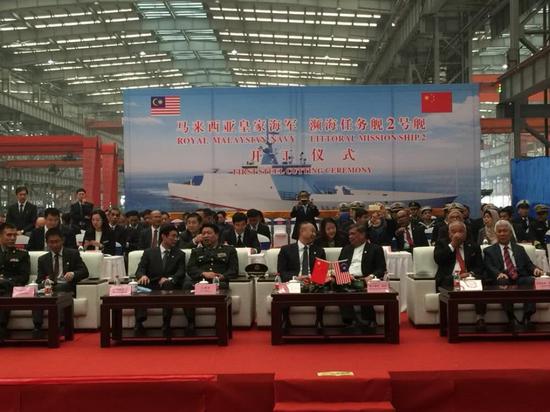
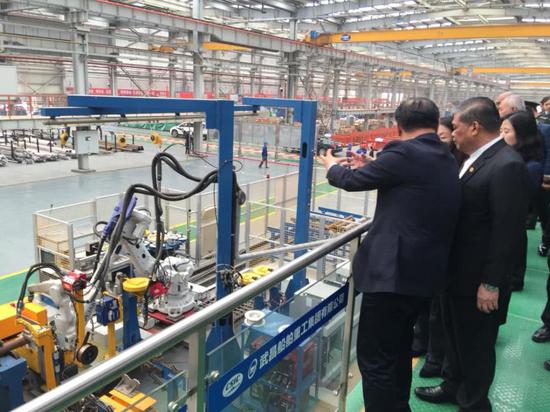
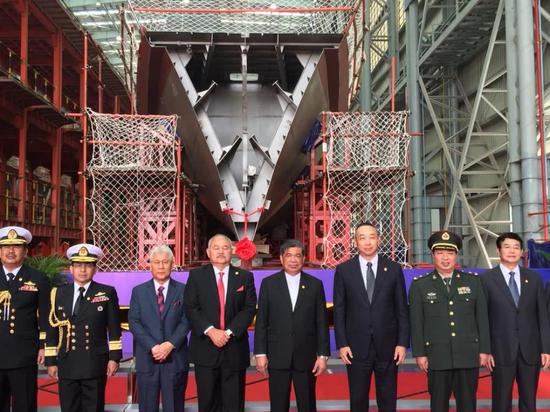





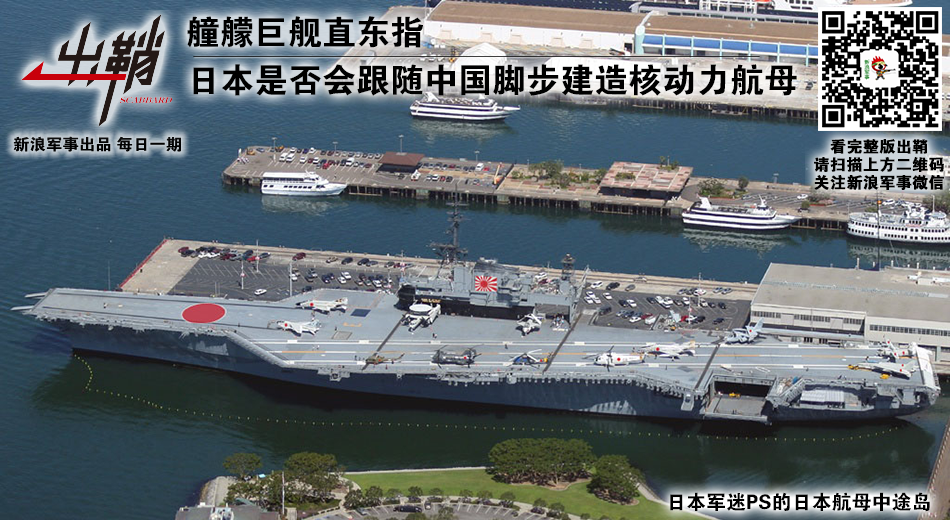






















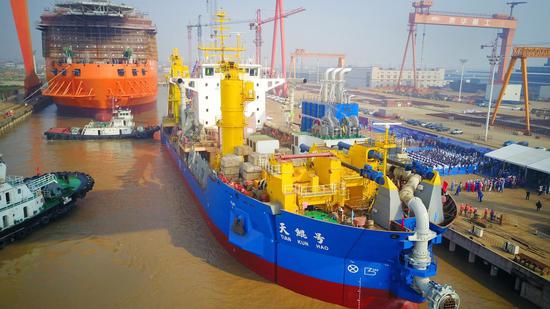
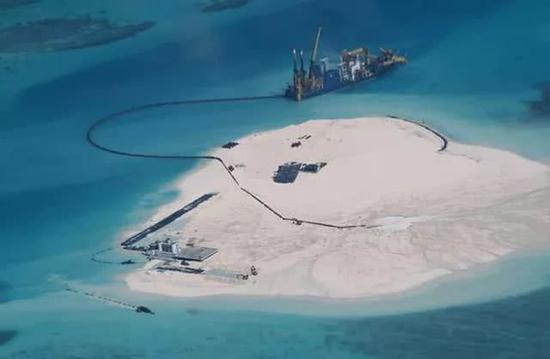
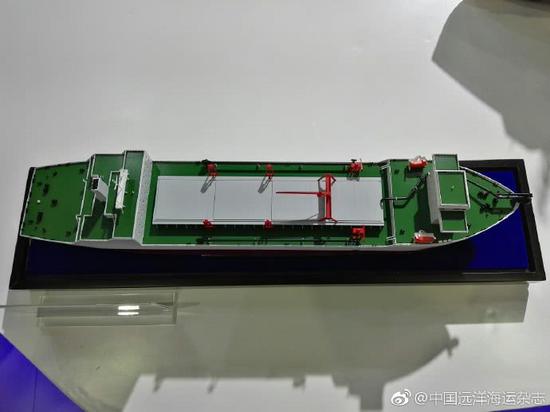
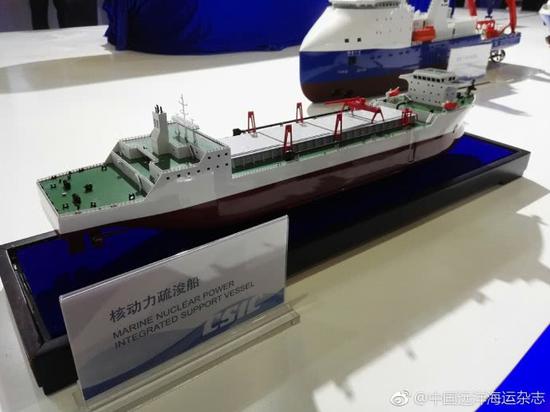
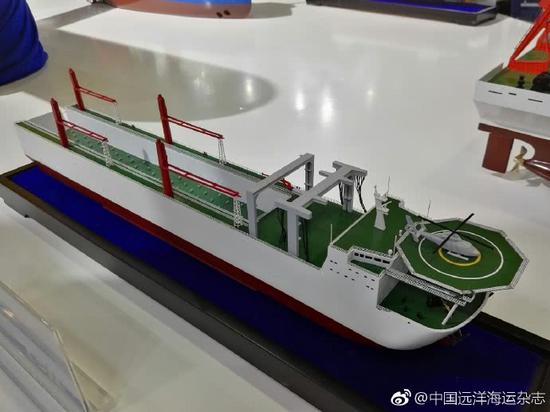
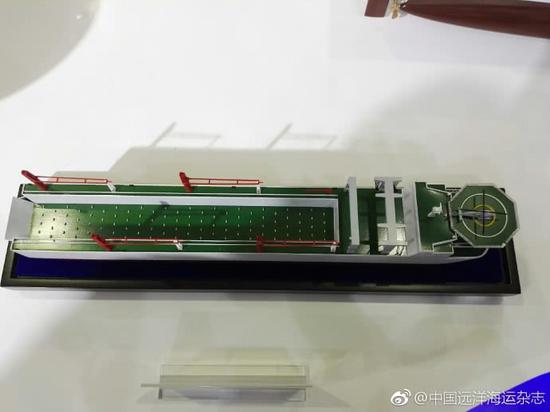
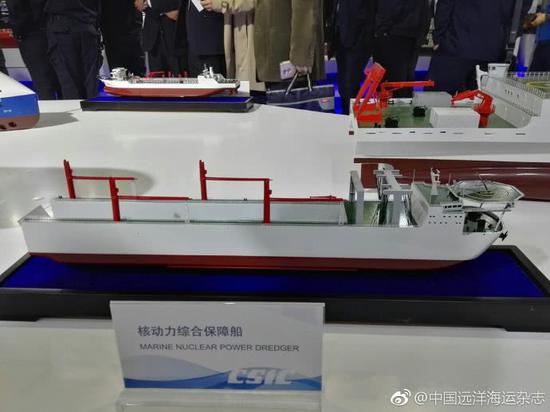

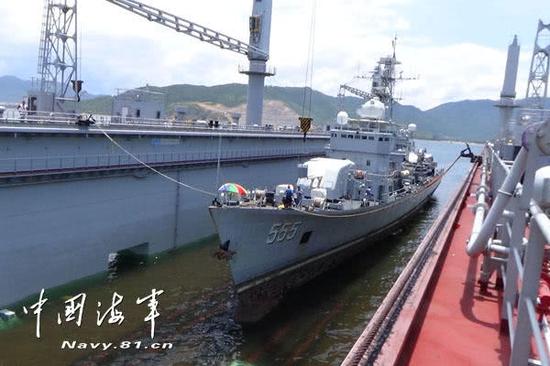
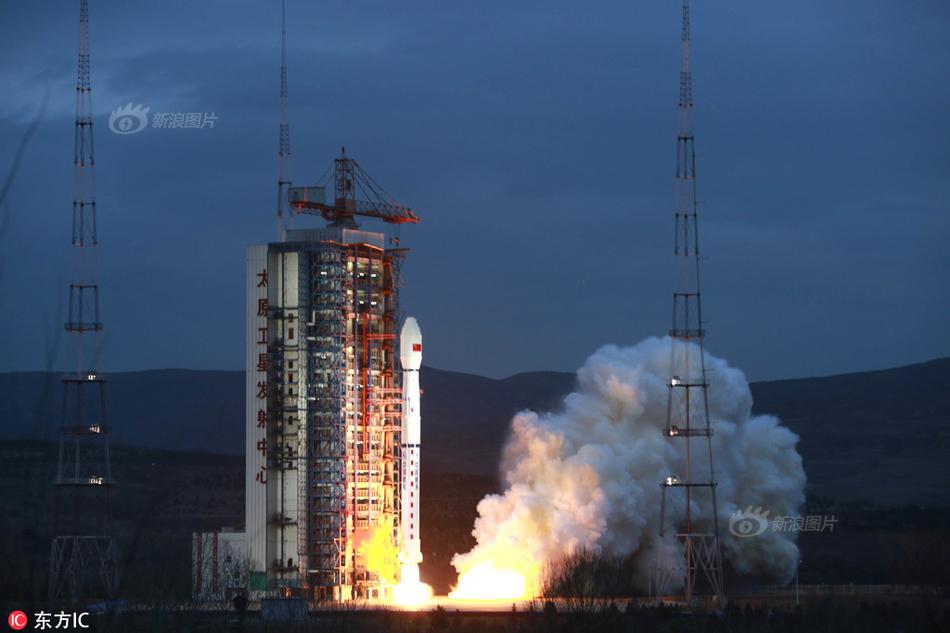
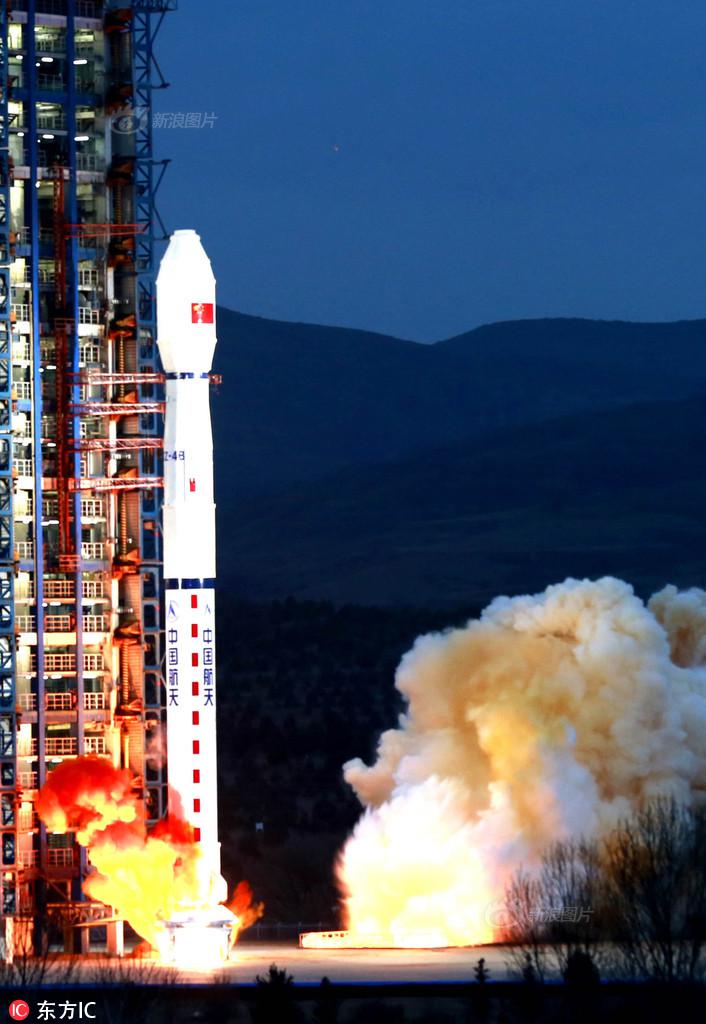
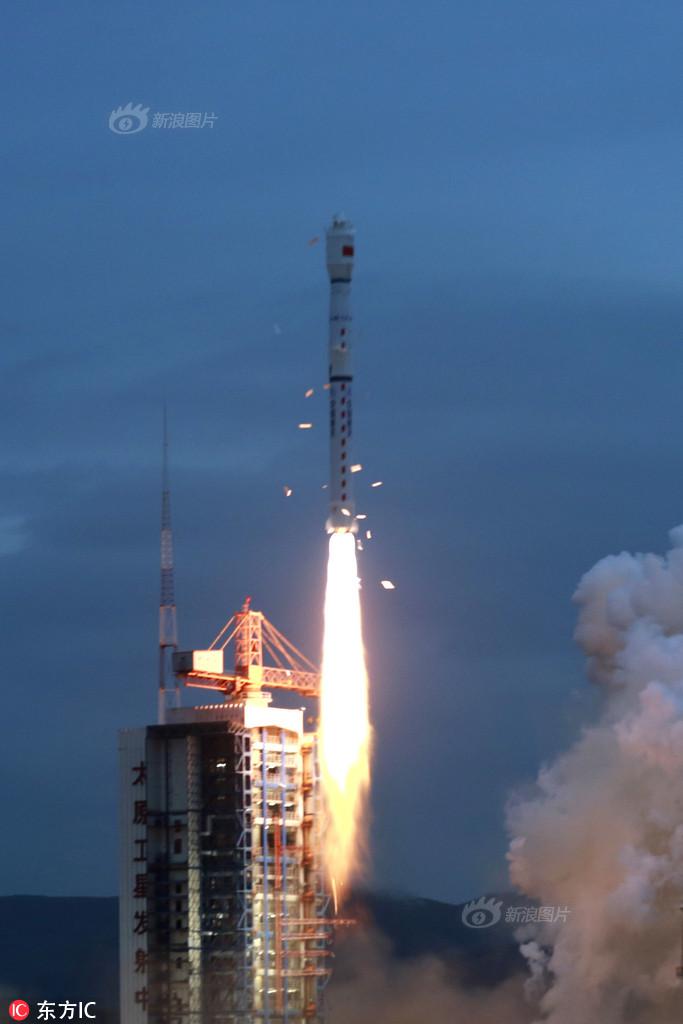
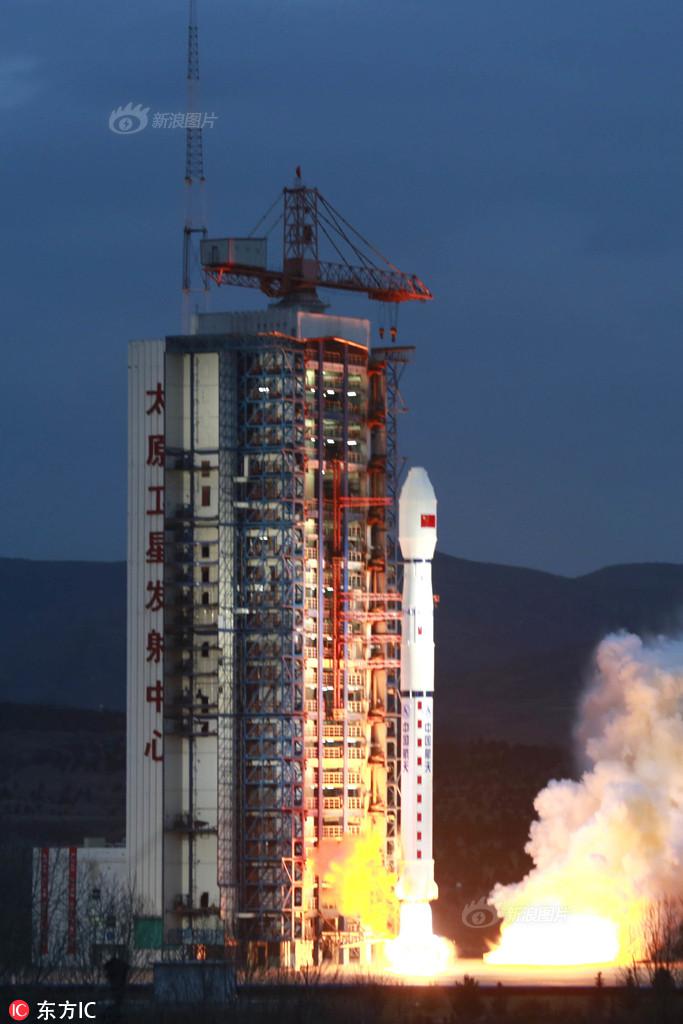
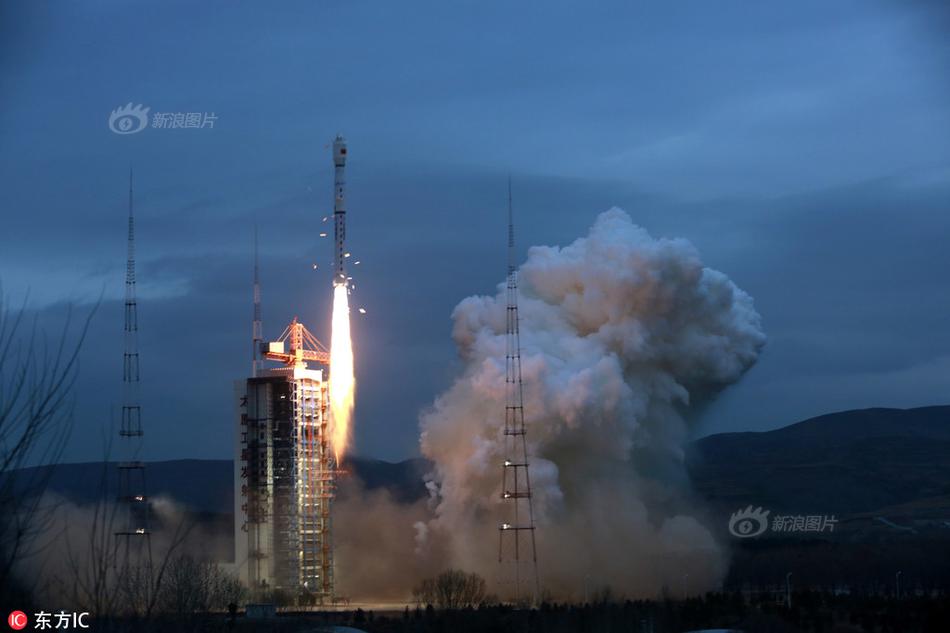



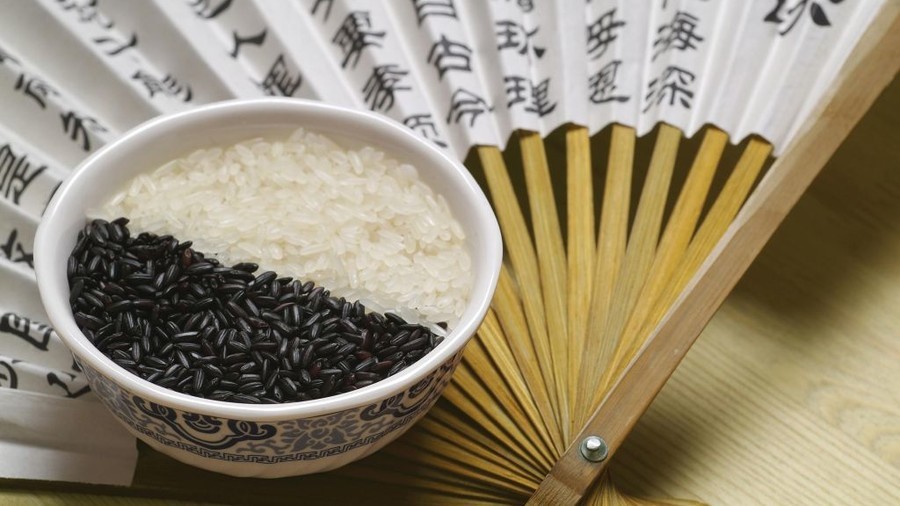
 China grows rice in salt water to feed 200 million people
China grows rice in salt water to feed 200 million people 